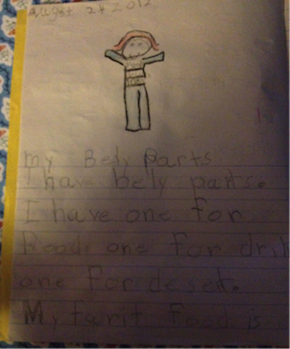I was debriefing an observation with one of our instructional coaches yesterday. We were talking about how to help a teacher begin a Writing Workshop in her classroom. Our challenge was around determining the most important piece of a writing workshop-especially for our novice teachers. Where do you start? Is it the record keeping? Is it the conferring? In our coaching conversation, we landed on first having conversations about the power of time and choice. Interestingly enough, I searched on the DSC website, and Maureen chose to focus on these two topics in her DSC blog posts on think time and preserving student choice. Check them out!
Time
Building in time for writing into our daily classroom instruction is so very critical. And it is such a challenge to make time for all of the different content and increasingly rigorous standards that we are supposed to teach in schools. But allowing for at least 45 minutes of writing instruction each day is imperative to building a community of writers in our classrooms. Just as children need time to practice when learning to play a musical instrument, in order to become successful writers, they also need time to practice-daily time. We suggest a simple structure:
- Getting Ready to Write
- Writing Time
- Sharing and Reflecting
The above components can be altered and revised based upon your particular classroom. However, they are all critical to solid writing instruction. Writers need time to prepare-time to talk with others to flesh out their ideas, time to read what other writers have written, and time to think. Writers also need ample time just to write. Finally, writers also need time to think about what they have written to help focus future writing and edit current pieces.
Choice
In Maureen’s earlier blog post, she writes about her students and their desire to write about farts. My daughter, on the other hand, really wanted to write about her stomach (or all four of them):

I think she figured that if she actually had four stomachs, she would always get dessert. Even if she were full from dinner, she had another stomach to fit that bowl of ice cream in! A middle school student I worked with wanted to write about getting lost at Kings Dominion and how frightening that was for him.
Choice was so important for all three of these students. As Lucy Calkins writes:
Writers do not write with words and convention alone; writers write above all with meaning. Children will invest themselves more in their writing if they are allowed-indeed, if they are taught-to select their own topics and write about subjects that are important to them.
Choice enables intrinsic motivation. If writers are able to choose and write about a topic that they are passionate about it, they will be much more motivated to write. Hence, they will write longer, more interesting pieces filled with voice, and have more desire to edit and revise. So when you begin to plan your writing workshop, ask yourself the following questions:
- Have you allowed enough time for writers to collaborate, to write, and to reflect?
- How have you incorporated choice into your instruction?
